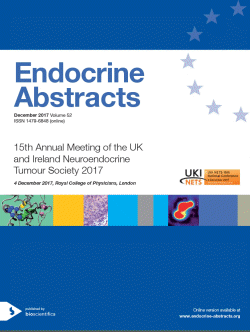Searchable abstracts of presentations at key conferences in endocrinology
ea0052nets3 | Speaker Abstracts
Abstract unavailable
ea0052nets8 | Speaker Abstracts
Abstract unavailable
ea0052nets9 | Speaker Abstracts
Abstract unavailable
ea0052nets10 | Speaker Abstracts
Abstract unavailable
ea0052nets12 | Speaker Abstracts
Abstract unavailable
ea0052nets13 | Speaker Abstracts
Abstract unavailable
ea0052nets14 | Speaker Abstracts
Abstract unavailable
ea0052nets16 | Speaker Abstracts




